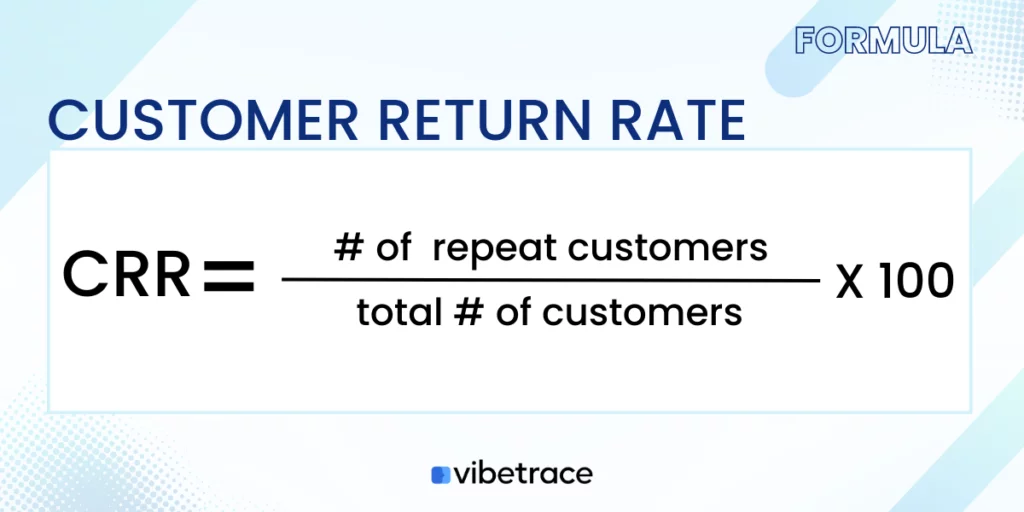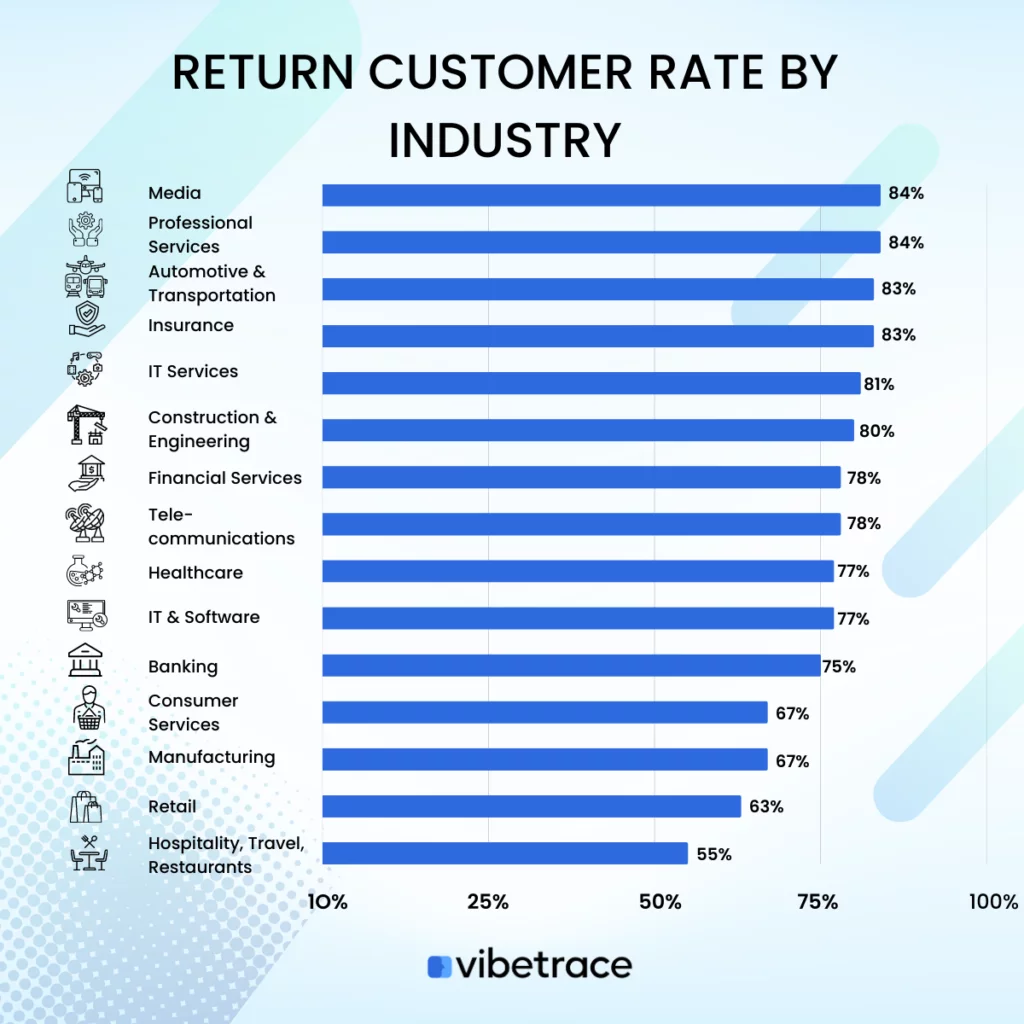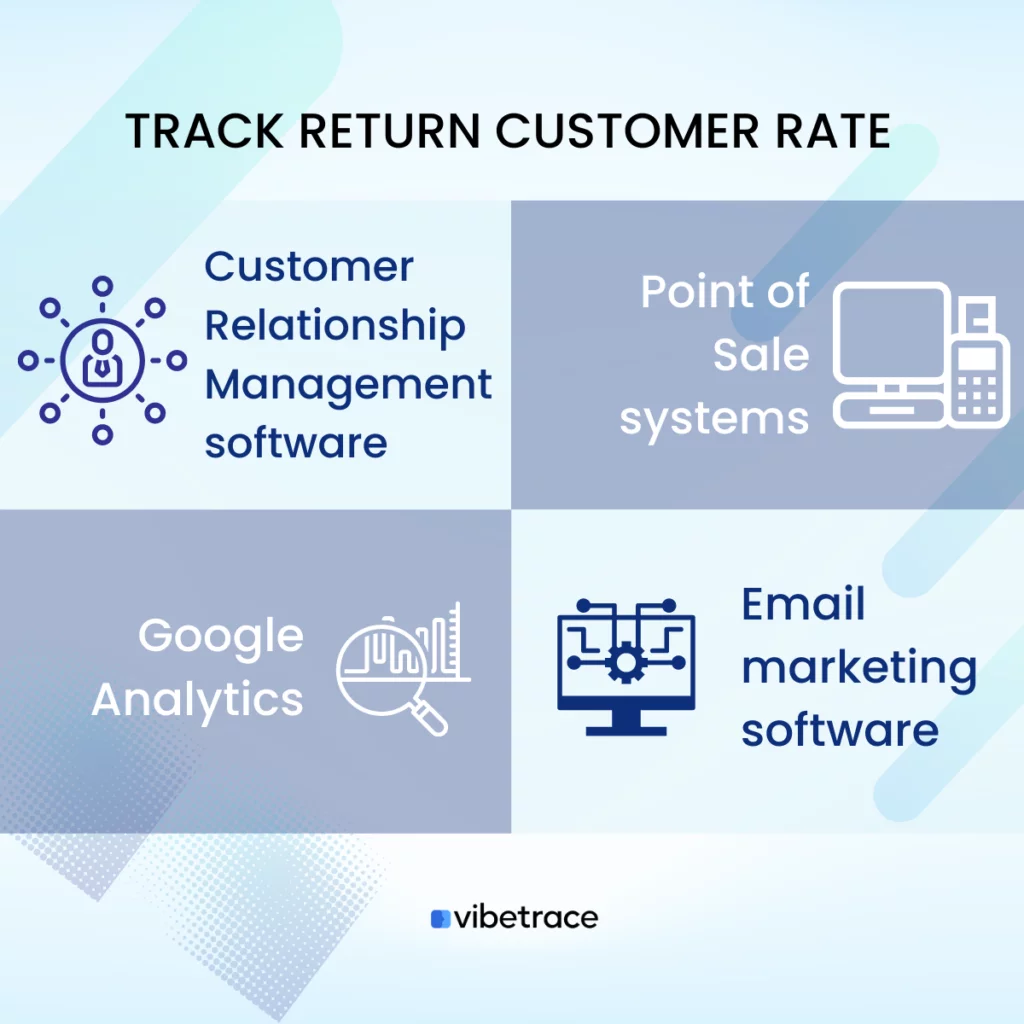Return customer rate is a Key Performance Indicator (KPI) for measuring the marketing efforts of a business when buyers purchase again.
Running a business is not that simple, it requires a lot of effort to keep improving it. The same thing goes for finding clients or customers who will repeat their purchases.
/help
Your customer experience, pricing scheme, updated list of products, and campaign discounts have a huge impact on your business, especially on keeping the loyalty of your new and existing customers.
To gather more insights into how your customers respond to your marketing efforts, you must evaluate your return customer rate.
This will help you learn more about how to understand them and significantly improve the processes of your business.
Optimize your return customer rate, boost your brand reputation, and keep your customers loyal.
What is Return Customer Rate?
Definition of Return Customer Rate
Return customer rate is a metric that measures the number of customers who return to make a purchase from a business after their initial transaction.
It is a useful indicator of customer satisfaction and loyalty, as well as the effectiveness of a company’s retention strategies.
This metric is an essential factor in the calculation of customer lifetime value, which is the estimated revenue that a customer will generate over the course of their relationship with a business.
A high return customer rate is generally seen as a positive sign for a business, as it indicates that customers are happy with their experience and are likely to continue to make purchases in the future.
Return Customer Rate Formula

To calculate the return customer rate, you need to divide the number of customers who have made more than one purchase by the total number of unique customers. Then, multiply the result by 100 to get a percentage
Return Customer Rate by Industry
Here’s the average return customer rate by industry:

| Industry | Customer Retention Rate |
| Media | 84% |
| Professional Services | 84% |
| Automotive & Transportation | 83% |
| Insurance | 83% |
| IT Services | 81% |
| Construction & Engineering | 80% |
| Financial Services | 78% |
| Telecommunications | 78% |
| Healthcare | 77% |
| IT & Software | 77% |
| Banking | 75% |
| Consumer Services | 67% |
| Manufacturing | 67% |
| Retail | 63% |
| Hospitality, Travel, Restaurants | 55% |
The data presented shows the return customer rate by industry, as compiled by Exploding Topics. The return customer rate is the percentage of customers who return to make a second purchase from a business or industry.
According to the data, the industries with the highest return customer rates are Media and Professional Services, with an 84% return customer rate for each. The Automotive & Transportation and Insurance industries follow closely behind with an 83% return customer rate each. IT Services and Construction & Engineering also have high return customer rates, both with an 80% or above rate.
/form
Want to be up to date with Marketing?
Subscribe to our Retail CX newsletter!

Stay connected with what’s really important to optimize your digital revenues.
By clicking the button, you accept our Terms & Conditions. Also you will need to confirm your email address.
In contrast, the Hospitality, Travel, and Restaurants industry has the lowest return customer rate at 55%. Retail and Manufacturing follow closely behind with 63% and 67% return customer rates respectively.
Overall, the data suggest that some industries may have better customer retention strategies than others.
Businesses in industries with higher return customer rates may be doing a better job of creating satisfied customers who are more likely to return for future purchases.
This data could be useful for your business to benchmark your own return customer rates and identify areas for improvement.
How to track Return Customer Rates?
Tracking customer return rates can help you measure your customer satisfaction and loyalty, identify trends in customer behavior, and improve retention strategies to increase revenue over time.

There are several tools that can be used to track return customer rates, including
Customer Relationship Management (CRM) software: CRM software enables your business to store and analyze customer data, such as purchase history and contact information. You may quickly identify repeat customers and track their behavior over time by utilizing CRM software.
Point of Sale (POS) systems: POS systems can be used to gather information about consumer purchases and track customer behavior over time. Many POS systems have reporting and analytics tools that can be used to create information on customer behavior and purchase history.
Google Analytics: Return customer rates on e-commerce websites can be tracked using Google Analytics. You may measure the percentage of your consumers who make repeat purchases and spot trends in customer behavior over time by creating custom reports and goals in Google Analytics.
Email marketing software: Email marketing software such as Vibetrace can be used to track repeat customer rates by evaluating each customer’s open rates, click-through rates, and purchase histories. You can boost your business’ return customer rates over time by segmenting email lists and sending customized campaigns to repeat consumers.
These tools can help businesses track return customer rates and identify trends in customer behavior over time. By regularly analyzing customer data and adjusting retention strategies accordingly, businesses can improve customer loyalty and increase revenue over time.
How often should you check Return Customer Rate?
The frequency of preventing the return customer rate depends on the nature of the business, its size, and the industry in which it operates.
However, it’s generally a good practice to check the return customer rate at regular intervals to monitor customer retention and satisfaction.
Daily or weekly: If your business has high transaction volumes or high customer churn rates.
Monthly or quarterly: If your business has lower transaction volumes or longer customer lifecycles,
It’s important to establish a consistent schedule for monitoring the return customer rate and to track the metric over time to identify trends and patterns in customer behavior.
By regularly monitoring the return customer rate, you can identify potential problems and opportunities for improvement, and adjust your customer retention strategies accordingly.
Return Customer Rate Calculator
Do you want to calculate your return customer rate? Use our simple calculator below.
Return Customer Rate Calculator
Important Things about Return Customer Rate
The key indicator of customer satisfaction and loyalty: A high return customer rate shows that customers are pleased with the products or services offered by your business and are likely to return for future purchases.
The measure of customer retention: The return customer rate measures how successfully your business holds its customers over time. Customers that are dissatisfied with their experiences are unlikely to return, due to a low return customer rate.
Affects revenue: Repeat customers are frequently more valuable than new customers because they are more likely to purchase multiple items and generate more revenue over time. Improving your business’s return customer rate might thus have a favorable impact on its overall revenue.
Vary by industry and business size: The rate of return customers varies greatly based on the industry and the size of the business. Businesses in the fashion industry, for example, may have a lower return customer rate due to frequent changes in fashion and trends.
Requires regular monitoring: It is critical to monitor the return customer rate on a regular basis in order to spot patterns and make any required changes to boost customer retention and loyalty.
In conjunction with other metrics: Return customer rate should be studied in conjunction with other indicators such as customer lifetime value, client acquisition cost, and customer happiness.
These measurements can provide a more complete picture of your business’ performance and customers.
Metrics related to Customer Return Rate
There are several other metrics that are closely related to Customer Return Rate and should be considered when evaluating the performance of ypur business:
Customer Lifetime Value
The estimated total value of a customer to a business over the course of their lifetime
Repeat Purchase Rate
The percentage of customers who make more than one purchase from your website.
Net Promoter Score
Churn Rate
The percentage of customers who stop using a product or service over a given time period.
Average Order Value
Gross Margin
Indicates if the business is generating a high-profit margin on its products.
Vibetrace can help your business boost return customer rates by creating targeted campaigns that engage customers and encourage them to make repeat purchases.
To do this, you can use Vibetrace to segment your email list based on customer behavior and purchase history, personalize their content using customer data, offer special incentives such as discounts or promotions, and use automation features to set up triggered campaigns based on customer behavior.
By using these tactics, you can create targeted campaigns that increase customer engagement and boost return customer rates over time.
Sign up for our email list today and unlock the full potential of your campaigns with our cutting-edge email marketing automation platform.
As a member of our email list, you’ll receive exclusive tips and tricks on how to optimize your campaigns, as well as early access to new features and updates.

